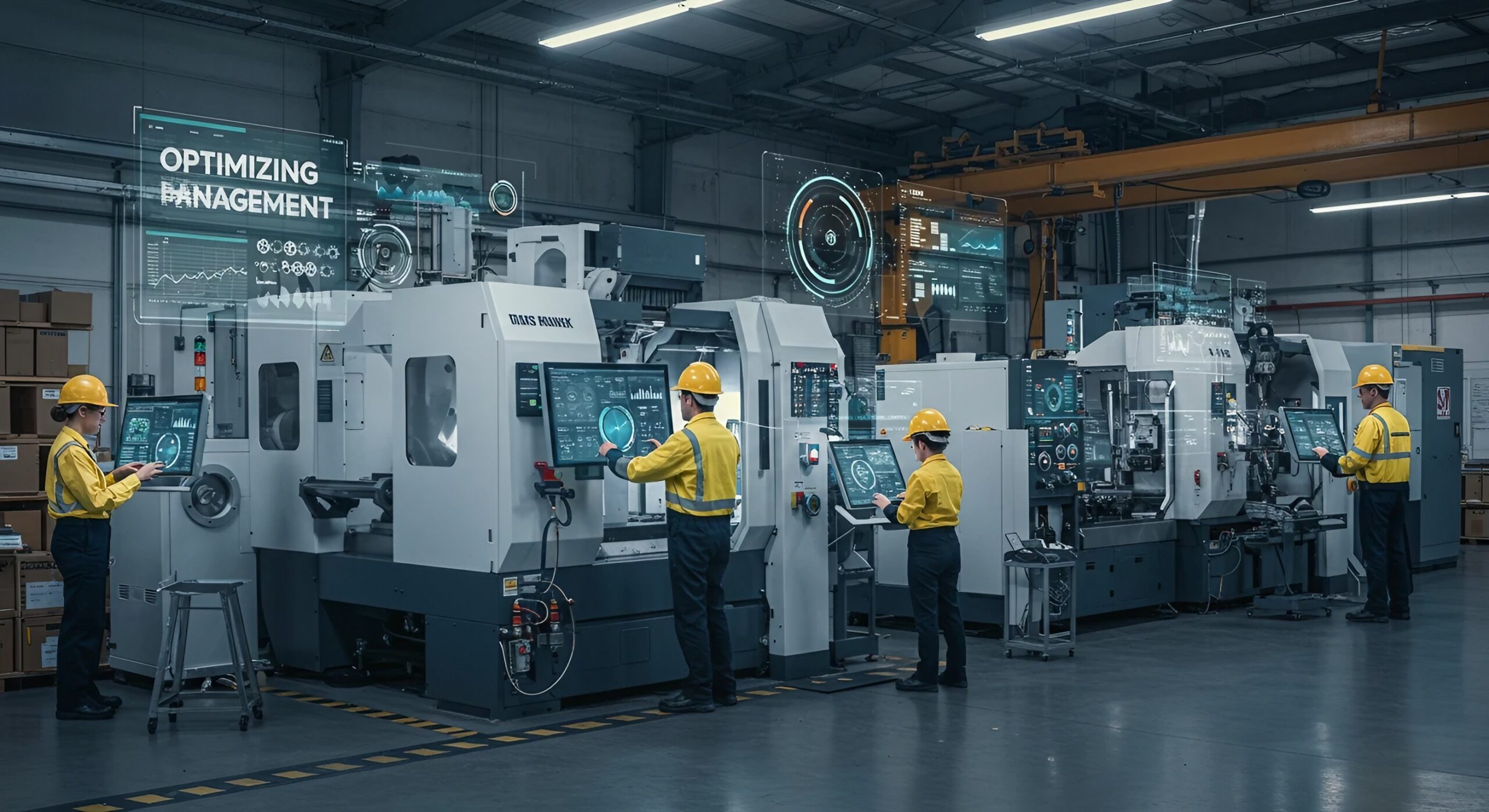Unlock the Power of AI-Driven Data Analysis to Improve Process Efficiency, Boost Decision-Making, and Enhance Customer Satisfaction for SMEs
Did you know that over 80% of businesses still struggle to fully leverage their data for meaningful insights? Despite the growing availability of tools and technologies, many SMEs (small and medium-sized enterprises) are sitting on a goldmine of data they are not using to its full potential. The irony? It is often not the lack of data but the inability to extract actionable insights from it that limits growth.
As tech decision-makers, you understand the power of data. But here is the real question: are you making the most of it? Enter Artificial Intelligence (AI). AI is more than just a buzzword; it is a game-changer when it comes to analysing data and driving process improvements. Let us explore how AI-driven data analysis can help unlock hidden opportunities for efficiency in your business.
How AI Converts Data into Actionable Insights
AI-driven data analysis excels at processing large volumes of data far more quickly and accurately than humans ever could. Traditional data analysis methods might involve basic reporting or manual reviews, which can be time-consuming and prone to error. AI, on the other hand, can identify patterns, trends, and anomalies across vast datasets, delivering insights that would be almost impossible to uncover otherwise.
For example, consider an SME manufacturing company that uses AI-driven data analysis to assess production data. AI could pinpoint inefficiencies in the production line, such as machinery downtime or underused equipment, allowing managers to make real-time adjustments. The result? Reduced waste, improved resource utilisation, and enhanced productivity—all without the need for constant human oversight. Learn more about AI in business to explore how it can transform your operations.
Tangible Advantages for SMEs
Let us take a step back and look at the real-world advantages AI-driven data analysis offers for SMEs like yours.
One of the most significant benefits is enhanced decision-making. With AI-driven data analysis, data becomes more than just numbers on a report. It becomes a tool for making informed decisions. AI can help you identify trends before they become problems, forecast outcomes, and make smarter strategic moves. Think of AI as your business’s digital assistant—constantly scanning your operations, processing information, and offering suggestions to improve efficiency.
Another key benefit is improved operational efficiency. AI’s ability to analyse processes in real-time allows for rapid detection of inefficiencies. Whether it is identifying bottlenecks in your supply chain or recognising repetitive tasks that could be automated, AI-driven data analysis provides the insight you need to streamline operations. This, in turn, can result in cost savings and faster delivery times.
When it comes to customer satisfaction, AI can also play a crucial role. It helps analyse customer data to identify preferences, behaviours, and trends. With this insight, you can create tailored experiences for each customer—whether it is a personalised marketing campaign or custom product recommendations—leading to higher engagement and loyalty.
AI’s predictive capabilities are another important advantage. Rather than waiting for a problem to arise, AI allows you to identify potential issues before they happen. This proactive approach can be applied across various areas, from inventory management to customer service, ensuring you are always one step ahead.
Real-World Scenario: AI in Retail
To illustrate the impact of AI-driven data analysis, let us look at the retail sector. Imagine a retailer using AI to track sales, customer preferences, and inventory levels in real time. The AI system can analyse this data to forecast demand trends, ensuring that the right products are available at the right time. This prevents stockouts and reduces excess inventory, both of which can negatively impact profits. By improving stock management, the retailer is also able to optimise their supply chain, reducing costs and improving delivery times.
The result is clear: AI-driven data analysis boosts not only operational efficiency but also customer satisfaction by offering the right products when customers want them.
Navigating the Challenges
Despite the immense potential, implementing AI-driven data analysis presents some challenges. These are not insurmountable, but they do require attention.
One challenge is ensuring data quality. AI is only as good as the data it is trained on. Poor-quality or incomplete data can lead to inaccurate insights. To make the most of AI-driven data analysis, ensure that your data is clean, structured, and relevant. Investing time and resources in data quality is crucial for AI to work effectively.
Another challenge is integrating AI with existing systems. For AI to provide value, it needs to seamlessly integrate with your current tools and processes. This can be difficult for SMEs with legacy systems or limited technical resources. However, many AI solutions are designed to be flexible and integrate with a wide variety of platforms, so this is becoming less of a barrier.
Skills and knowledge also play a role in AI adoption. While AI technology is powerful, it can be complex. The good news is that many AI tools are user-friendly, and you do not need to be a data scientist to benefit from them. However, you may need to invest in training or hire a data expert to guide you through the process and ensure you are leveraging AI-driven data analysis to its full potential.
Getting Started with AI
If you are ready to harness AI-driven data analysis for process improvement, the first step is defining your goals. Identify the areas of your business where data analysis can have the most significant impact, whether it is improving supply chain efficiency, enhancing customer experiences, or reducing operational costs. Having a clear goal will help guide your AI implementation.
Starting small and scaling is another important consideration. You do not need to overhaul your entire operation at once. Test AI on a small project or department, measure the impact, and scale it up as you see results. This approach minimises risk and allows for adjustments along the way.
Choosing the right AI tools is crucial. There are numerous AI solutions available, from easy-to-use platforms for data analysis to more advanced machine learning options. Make sure you select tools that align with your specific needs, budget, and technical capabilities.
Investing in training for your team is also key. Ensure that your staff understands the basics of AI and how to interpret the insights it generates. Empowering your team with the knowledge to make data-driven decisions will maximise the value of your AI-driven data analysis investment. AI training resources are available online to help your team get started.
Finally, it is important to continually monitor and optimise your AI systems. AI is not a one-and-done solution; it is an ongoing process. Regularly assess its performance and refine your strategies based on the insights generated. This iterative approach ensures that your AI implementation remains effective and delivers long-term value.
Conclusion
AI-driven data analysis is no longer a futuristic concept reserved for large corporations. It’s an accessible, powerful tool that can drive significant improvements in efficiency for SMEs. From streamlining operations to personalising customer experiences, the potential benefits are vast. The key is to start small, stay focused, and keep optimising.
By embracing AI, you can transform data into a strategic asset that drives growth, enhances productivity, and boosts your competitive edge. So, what’s stopping you from unlocking the full potential of your data today?
Ready to unlock the full potential of your data and drive process improvement in your business? Our team of AI experts can help you implement the right AI-powered data analysis tools tailored to your needs. Whether you’re looking to enhance decision-making, streamline operations, or improve customer experiences, we can guide you every step of the way. Don’t let valuable data go untapped—contact us now to discover how AI can revolutionise your processes and boost your business efficiency. Reach out today to learn more about AI solutions for SMEs and how we can help you stay ahead of the competition.
Contact us today to explore AI-powered solutions for smarter business operations!











